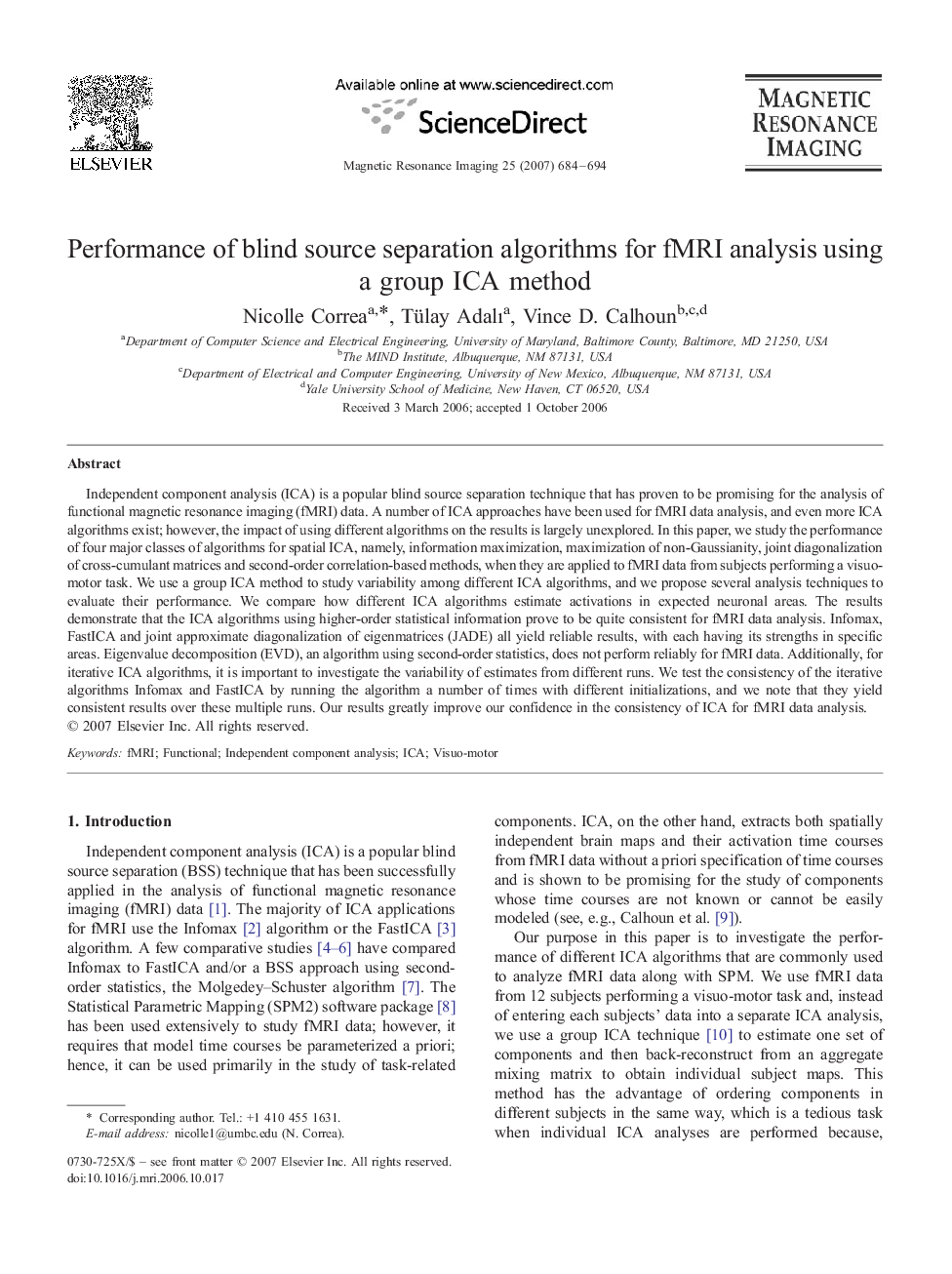| Article ID | Journal | Published Year | Pages | File Type |
|---|---|---|---|---|
| 1807648 | Magnetic Resonance Imaging | 2007 | 11 Pages |
Independent component analysis (ICA) is a popular blind source separation technique that has proven to be promising for the analysis of functional magnetic resonance imaging (fMRI) data. A number of ICA approaches have been used for fMRI data analysis, and even more ICA algorithms exist; however, the impact of using different algorithms on the results is largely unexplored. In this paper, we study the performance of four major classes of algorithms for spatial ICA, namely, information maximization, maximization of non-Gaussianity, joint diagonalization of cross-cumulant matrices and second-order correlation-based methods, when they are applied to fMRI data from subjects performing a visuo-motor task. We use a group ICA method to study variability among different ICA algorithms, and we propose several analysis techniques to evaluate their performance. We compare how different ICA algorithms estimate activations in expected neuronal areas. The results demonstrate that the ICA algorithms using higher-order statistical information prove to be quite consistent for fMRI data analysis. Infomax, FastICA and joint approximate diagonalization of eigenmatrices (JADE) all yield reliable results, with each having its strengths in specific areas. Eigenvalue decomposition (EVD), an algorithm using second-order statistics, does not perform reliably for fMRI data. Additionally, for iterative ICA algorithms, it is important to investigate the variability of estimates from different runs. We test the consistency of the iterative algorithms Infomax and FastICA by running the algorithm a number of times with different initializations, and we note that they yield consistent results over these multiple runs. Our results greatly improve our confidence in the consistency of ICA for fMRI data analysis.
